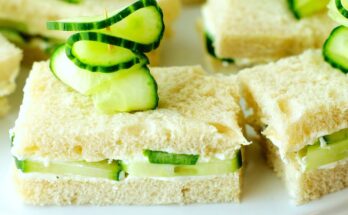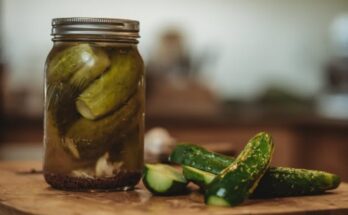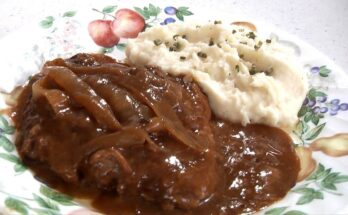Croquettes Recipe: There’s something magical about biting into a perfectly crispy croquette, hearing that delightful crunch, and then tasting the soft, creamy filling inside. Whether you’re making them for a casual family dinner, a festive gathering, or just to satisfy a craving, croquettes are a dish that never disappoints. This guide will walk you through everything you need to know—from the ingredients you’ll need, to the exact steps to create golden, crunchy croquettes at home.
By the end, you’ll have the confidence to whip up croquettes like a pro. Let’s dive right in!
What are Croquettes?
Croquettes are small, breadcrumb-coated rolls that are fried until crisp and golden. The filling can vary depending on personal taste and regional traditions—potato, cheese, chicken, fish, or even vegetables. Originating in France, croquettes quickly spread around the globe, finding their place in Spain, the Netherlands, Japan, and beyond.
What makes them so special? It’s the contrast. The outside is crispy and crunchy, while the inside is warm, creamy, and packed with flavor. Think of them as comfort food in bite-sized form.
Why Croquettes are a Global Favorite
Croquettes are beloved worldwide because they’re versatile, budget-friendly, and crowd-pleasing. In Spain, you’ll find them filled with jamón or cheese, served as tapas. In Japan, korokke often come stuffed with mashed potatoes and ground beef. Meanwhile, in the Netherlands, bitterballen—a type of croquette—are a must-have with beer.
They’re also a fantastic way to repurpose leftovers. Got leftover mashed potatoes or cooked chicken? Croquettes turn them into a gourmet snack.
Ingredients You’ll Need
Main Ingredients for Classic Croquettes
For a classic potato croquette recipe, here’s what you’ll need:
- Potatoes (500g or about 3 large potatoes): The base of the croquettes, giving them a creamy interior.
- Butter (2 tablespoons): Adds richness to the mashed potatoes.
- Milk or Cream (¼ cup): Creates a smoother, creamier texture.
- Cheese (½ cup, grated): Parmesan, cheddar, or mozzarella—choose your favorite.
- Eggs (2 large): One for binding the mixture, the other for coating.
- Breadcrumbs (1 cup): The crispy coating that makes croquettes irresistible.
- Salt & Pepper: For seasoning.
- Vegetable Oil (for frying): Enough for deep frying or shallow frying.
This is the basic recipe, but feel free to get creative.
Optional Variations for Different Flavors
Croquettes are a blank canvas. Here are some tasty variations:
- Meat Lovers: Add shredded chicken, minced beef, or ham.
- Seafood Twist: Mix in flaked fish or shrimp.
- Vegetarian Delight: Use spinach, mushrooms, or peas.
- Cheese Bomb: Stuff the center with a cube of mozzarella for a gooey surprise.
Best Substitutes for Common Ingredients
- No breadcrumbs? Use crushed cornflakes or panko for an extra-crispy coating.
- No milk or cream? Swap with plant-based milk like almond or oat milk.
- No cheese? You can skip it, but nutritional yeast adds a cheesy flavor for vegans.
Kitchen Tools and Equipment
Essential Tools for Perfect Croquettes
To make croquettes easily, you don’t need a professional kitchen. These basics will do:
- Potato masher or fork – to mash your potatoes smoothly.
- Mixing bowls – for combining ingredients.
- Knife and cutting board – for chopping any add-ins.
- Slotted spoon – for lifting fried croquettes out of hot oil.
- Frying pan or deep fryer – depending on your cooking preference.
Helpful Extras to Make Cooking Easier
- Food processor: For extra-smooth mashed potatoes.
- Cooling rack: Keeps croquettes crispy after frying.
- Kitchen thermometer: Ensures the oil stays at the perfect temperature (around 350°F / 175°C).
These extras aren’t essential but can help you achieve professional-quality croquettes at home.
Step-by-Step Guide to Making Croquettes
Step 1 – Preparing the Base Mixture
The foundation of good croquettes is the filling. For potato croquettes, start by boiling your potatoes until they’re tender. Drain well and mash them with butter, milk, salt, and pepper until smooth. Add grated cheese and any extra ingredients (like chicken or spinach). Mix well until everything is combined.
A key tip here: make sure the mixture is firm, not too runny. If it feels too soft, chill it in the fridge for 30 minutes before shaping.
Step 2 – Shaping the Croquettes
Take a spoonful of the potato mixture and roll it into an oval or cylindrical shape. Keep them small enough to eat in a couple of bites. If you want a cheesy surprise, insert a cube of mozzarella into the center before sealing it.
Pro tip: lightly oil your hands to prevent sticking.
Step 3 – Coating the Croquettes
The coating is what makes croquettes golden and crunchy. First, roll each croquette in flour, then dip into beaten egg, and finally coat with breadcrumbs. For an extra-crispy crust, repeat the egg and breadcrumb step twice.
Step 4 – Frying to Golden Perfection
Heat oil in a frying pan or deep fryer to 350°F (175°C). Fry the croquettes in small batches until golden brown—usually 3–4 minutes. Remove with a slotted spoon and drain on a paper towel or cooling rack.
Now, they’re ready to serve!
Tips for Perfect Croquettes Every Time
Avoiding Common Mistakes
Many beginners struggle with croquettes falling apart. This usually happens because the mixture is too soft or the oil isn’t hot enough. Always chill the shaped croquettes for at least 20–30 minutes before frying—they’ll hold their shape better.
Making Croquettes Crispy and Golden
The secret to crispy croquettes is the double-coating method and maintaining the right oil temperature. Too hot, and they burn outside while staying raw inside. Too cool, and they absorb oil and turn soggy. Aim for 350°F consistently.
How to Store and Reheat Croquettes
- Storing: Keep leftovers in an airtight container in the fridge for up to 3 days.
- Freezing: Arrange uncooked croquettes on a tray, freeze, then transfer to a bag. Fry directly from frozen when ready.
- Reheating: Bake in the oven at 350°F for 10–15 minutes to restore crispiness.
Different Types of Croquettes Around the World
Spanish Croquettes
Spain is one of the countries where croquettes are considered a national treasure. Known locally as croquetas, they are often made with béchamel sauce mixed with ham (jamón), chicken, or codfish. Unlike potato-based croquettes, the Spanish version relies heavily on a thick, creamy béchamel base that’s chilled, shaped, and then fried.
You’ll find croquetas served in tapas bars across Spain, often alongside olives, cheese, and a glass of wine. They’re not just appetizers but also a symbol of Spanish hospitality. Spaniards love experimenting with fillings—from mushrooms and spinach to blue cheese. One bite and you’ll understand why they’re so popular: creamy, rich, and absolutely addictive.
If you want to bring a bit of Spain to your kitchen, consider making béchamel-based croquettes with diced ham. They’re a little more technical than potato versions but totally worth the effort.
Japanese Korokke
In Japan, croquettes are called korokke, and they’ve taken on a life of their own. Typically made with mashed potatoes, ground meat (beef or pork), onions, and seasonings, korokke are coated in panko breadcrumbs instead of regular breadcrumbs. This gives them a lighter, airier crunch.
Korokke can be found everywhere in Japan—from street food stalls to school cafeterias. They’re usually served with a drizzle of tangy tonkatsu sauce, which perfectly balances the richness of the croquette. Variations include pumpkin korokke, cream korokke (with seafood or crab filling), and curry-flavored korokke.
If you’re looking for a Japanese-inspired twist, try swapping regular breadcrumbs for panko. The result will be croquettes that are crispier, less greasy, and melt-in-your-mouth delicious.
Dutch Bitterballen
In the Netherlands, croquettes take the form of bitterballen—a bite-sized snack often enjoyed with beer. These are usually filled with a thick ragout mixture made from beef or veal, butter, and broth, then coated in breadcrumbs and deep-fried.
Bitterballen are traditionally served with mustard for dipping, making them the perfect pub food. Unlike potato croquettes, they’re more savory, meaty, and rich. Dutch kroketten (the larger version of bitterballen) are also sold in vending machines, highlighting just how much the Dutch love their croquettes.
The Dutch version proves that croquettes are not just comfort food but also an essential part of local culture. If you want to try something different, make a batch of bitterballen and serve them with a cold beer—you’ll feel like you’re in Amsterdam.
Best Side Dishes to Serve with Croquettes
Light Salads and Dips
Croquettes can be quite rich, so pairing them with something fresh and light balances the meal. A crisp green salad with a lemon vinaigrette or a tomato-cucumber salad works wonders. For dips, think beyond ketchup. Try aioli, garlic yogurt dip, or spicy chili sauce.
A Mediterranean-style salad with olives, feta, and cucumber pairs beautifully with cheese croquettes, while a simple coleslaw can complement meat-based croquettes. Dips also elevate the dish—creamy sauces enhance potato croquettes, while tangy dips cut through heavier versions.
Hearty Pairings for a Complete Meal
If you want croquettes to be the star of the meal, add some hearty sides:
- Rice or Pilaf: Especially good with seafood or chicken croquettes.
- Roasted Vegetables: Adds texture and balances the richness.
- Bread or Buns: In some places, croquettes are even served in sandwiches.
- Soup: A bowl of creamy soup (like mushroom or tomato) with croquettes makes a warm, comforting meal.
For a full dinner, try serving croquettes with roasted chicken or grilled fish alongside a vegetable side dish. They can play the role of appetizer, side dish, or even the main star depending on your menu.
FAQs about Croquettes Recipe
1. What’s the best oil for frying croquettes?
Use neutral oils with a high smoke point, like sunflower, canola, or vegetable oil. Olive oil can be used but may alter the flavor.
2. Why do my croquettes fall apart while frying?
This usually happens if the mixture is too wet or the oil isn’t hot enough. Chill your croquettes before frying and maintain oil temperature around 350°F.
3. Can I make croquettes without eggs?
Yes! Use milk, a flour slurry, or even aquafaba (chickpea liquid) as a substitute for dipping before breadcrumbs.
4. Are croquettes gluten-free?
They can be! Just use gluten-free breadcrumbs and flour. Many stores now carry gluten-free panko.
5. What’s the best cheese for croquettes?
Cheddar, mozzarella, and parmesan are the most popular. For a twist, try gouda, brie, or even blue cheese for a strong flavor.
Conclusion
Croquettes are more than just a snack; they’re a culinary journey across cultures. From Spanish croquetas with creamy béchamel to Japanese korokke with panko crunch and Dutch bitterballen with savory ragout, each version tells a story. They’re versatile, easy to make, and guaranteed to impress whether you’re cooking for friends, family, or just yourself.
Now that you know the ingredients, steps, and tricks for making perfect croquettes, it’s time to roll up your sleeves and try them at home. Experiment with different fillings, play with coatings, and pair them with your favorite dips. Once you master them, croquettes will quickly become your go-to comfort food.



